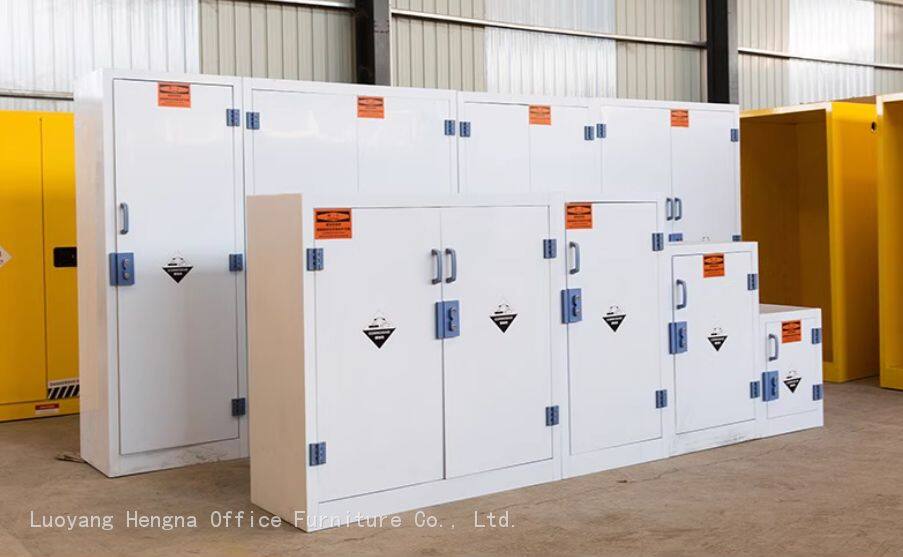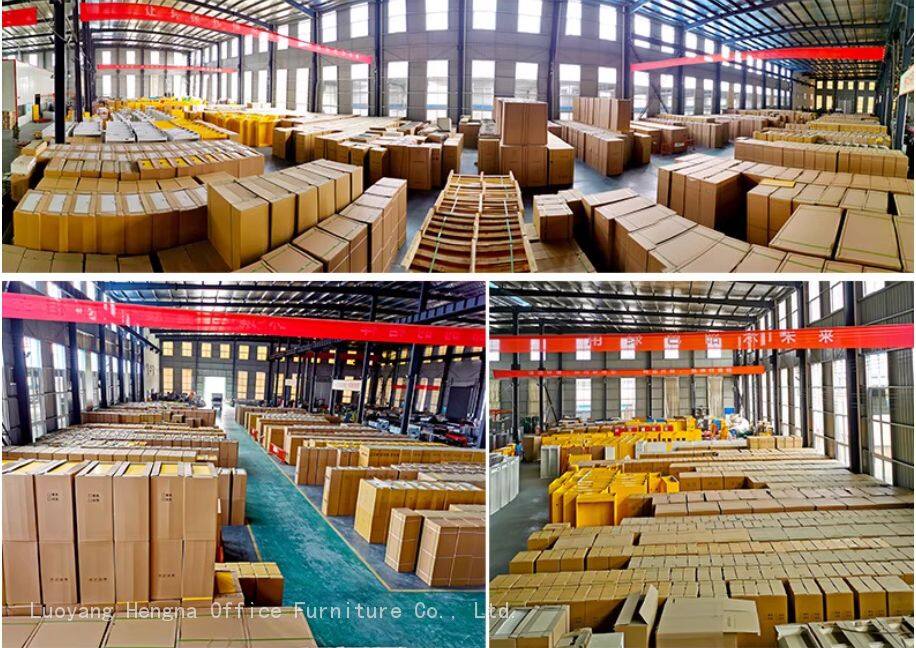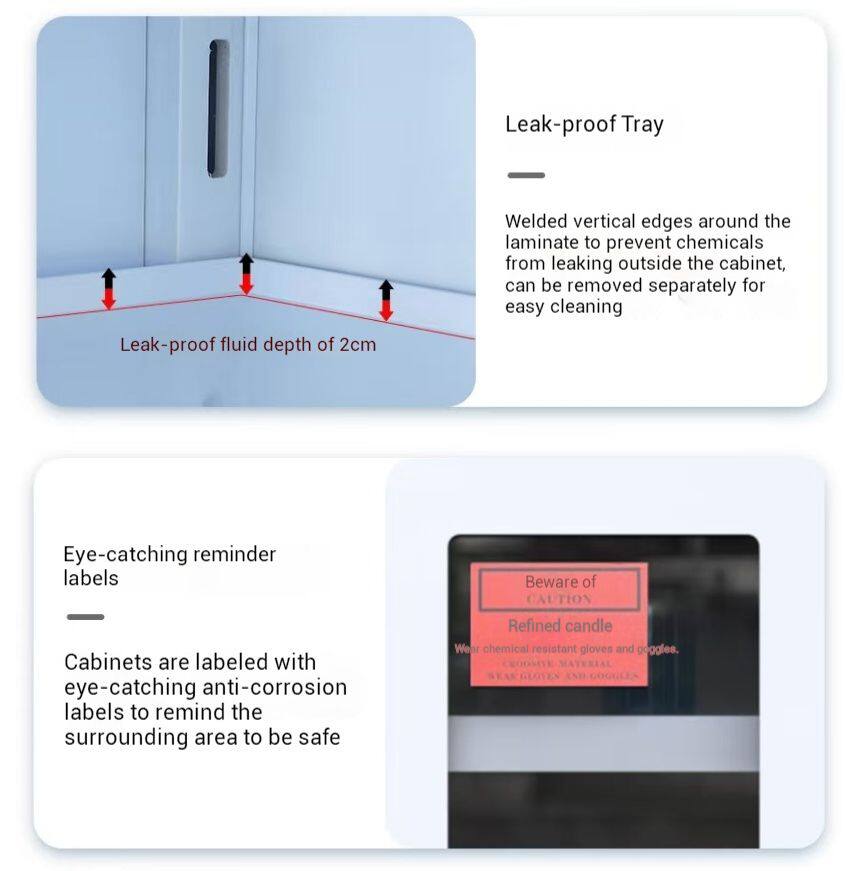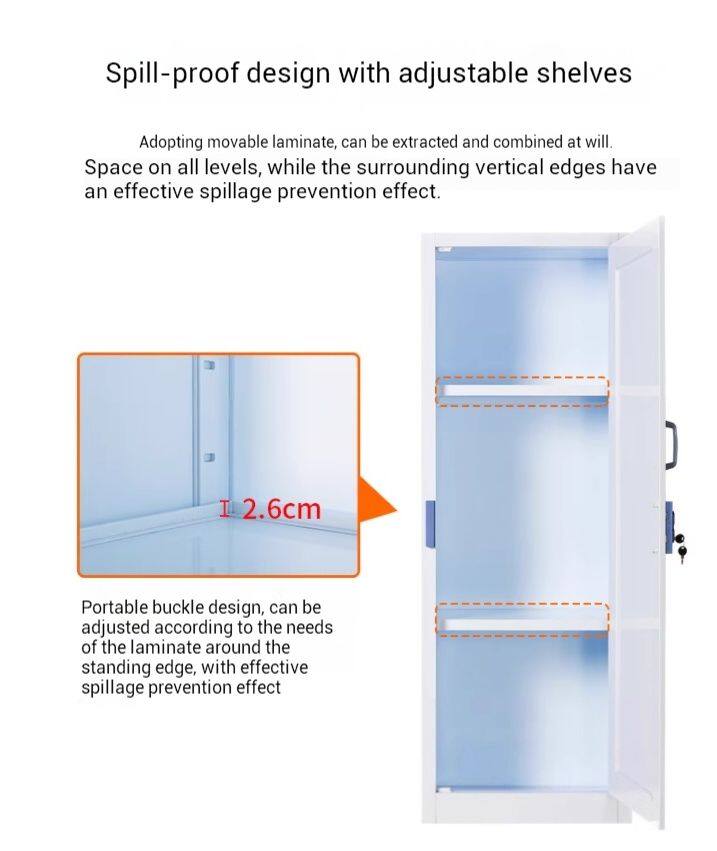-
 Sarah
Hi there! Welcome to my shop. Let me know if you have any questions.
Sarah
Hi there! Welcome to my shop. Let me know if you have any questions.
Your message has exceeded the limit.

How to choose a PP Acid and Alkali Storage Cabinet for Safe Chemical Containment
2025-11-06 15:35:05
Why PP Storage Cabinets Matter for Chemical Safety
When it comes to laboratory and industrial chemical management, selecting the right PP acid and alkali storage cabinet is crucial for maintaining safety and compliance. Polypropylene (PP) storage cabinets have become the industry standard for corrosive chemical containment due to their exceptional chemical resistance and durability. Unlike traditional metal cabinets that can corrode or degrade when exposed to aggressive substances, PP cabinets provide long-lasting protection for both your chemicals and your facility. This comprehensive guide will walk you through the essential factors to consider when choosing the perfect storage solution for your specific needs.

Understanding Polypropylene Material Properties
What Makes PP Ideal for Chemical Storage?
Polypropylene is a thermoplastic polymer renowned for its outstanding chemical resistance properties. According to material science research, PP demonstrates excellent resistance to most acids, alkalis, and organic solvents12. This makes it particularly suitable for storing:
Strong acids (sulfuric acid, hydrochloric acid, nitric acid)
Alkalis and bases (sodium hydroxide, potassium hydroxide)
Salt solutions and oxidizing agents
Most organic solvents
The molecular structure of PP provides a non-polar surface that prevents chemical penetration and degradation, ensuring the cabinet maintains its structural integrity even with prolonged exposure to corrosive substances3.
Temperature Resistance and Environmental Factors
PP storage cabinets typically operate effectively within a temperature range of -30°C to +100°C, with some models capable of withstanding short-term exposure up to +140°C7. This thermal stability makes them suitable for various laboratory environments and storage conditions.
Key Selection Criteria for PP Acid and Alkali Storage Cabinets
1. Construction Quality and Design Features
When evaluating PP storage cabinets, consider these essential construction elements:
Material Thickness: Look for cabinets constructed from high-quality PP with adequate wall thickness (typically 5-10mm) to ensure structural integrity and chemical resistance.
Seamless Design: Opt for cabinets with seamless or fully welded construction to prevent chemical leakage at joints and seams. This design feature eliminates potential weak points where chemicals could accumulate or cause degradation9.
Ventilation System: Proper ventilation is critical for safe chemical storage. Quality PP cabinets should include:
Built-in ventilation ports with flame arresters
Optional ducting capabilities for external ventilation
Adjustable air flow controls for different chemical types
2. Storage Capacity and Configuration
Size Requirements: Evaluate your storage needs based on:
Current chemical inventory
Future expansion plans
Container sizes and types
Available laboratory space
Compartment Design: Consider cabinets with:
Separate compartments for acids and alkalis
Adjustable shelving systems
Spill containment trays with minimum 2-inch depth
Load-bearing capacity of at least 150 pounds per shelf28
3. Safety and Compliance Features
Regulatory Compliance: Ensure your chosen cabinet meets these standards:
OSHA 29 CFR 1910.106 for flammable and combustible liquids
EPA regulations for chemical storage
Local fire and safety codes
ISO 9001 quality management certification9
Safety Features: Look for:
Three-point locking mechanisms with manual override
Self-closing doors with magnetic latches
Grounding provisions for static dissipation
Leak-proof secondary containment systems
Chemical Compatibility and Storage Guidelines
Proper Chemical Segregation
One of the most critical aspects of chemical storage is proper segregation. Never store incompatible chemicals together, even in a high-quality PP cabinet. Follow these guidelines:
| Chemical Type | Storage Requirements | Incompatible Substances |
|---|---|---|
| Strong Acids | Separate compartment, secondary containment | Bases, oxidizers, flammables |
| Strong Bases | Separate compartment, ventilation | Acids, oxidizers, metals |
| Oxidizers | Cool, dry location, separate from organics | Flammables, reducing agents |
| Flammables | Flame-resistant cabinet, grounding | Oxidizers, acids |
Container and Labeling Requirements
Use only compatible containers (PP, HDPE, or glass)
Ensure all containers are properly labeled with chemical name, concentration, and hazard warnings
Implement a first-in, first-out (FIFO) inventory system
Regularly inspect containers for damage or deterioration14
Installation and Maintenance Considerations
Proper Installation Guidelines
Location Selection: Choose a location that:
Is away from direct sunlight and heat sources
Provides adequate ventilation
Allows for easy access and emergency response
Meets local building and fire codes
Cabinet Placement: Ensure:
Level placement on a stable surface
Adequate clearance for door operation (minimum 180° opening)
Proper anchoring if required by local regulations
Access to emergency equipment (eyewash stations, safety showers)
Regular Maintenance Procedures
Implement a maintenance schedule that includes:
Daily Checks:
Visual inspection for leaks or damage
Verification of proper door closure
Monitoring of ventilation systems
Monthly Inspections:
Detailed examination of seals and gaskets
Testing of locking mechanisms
Cleaning of interior surfaces with compatible cleaners
Annual Professional Service:
Comprehensive structural inspection
Ventilation system performance testing
Recertification of safety features



Cost Considerations and ROI Analysis
Initial Investment vs. Long-term Value
While PP storage cabinets may represent a higher initial investment compared to traditional metal cabinets, they offer significant long-term benefits:
Durability: PP cabinets typically last 15-20 years with proper maintenance, compared to 5-10 years for metal cabinets in corrosive environments9.
Reduced Replacement Costs: The corrosion-resistant nature of PP eliminates the need for frequent replacement due to chemical damage.
Safety Benefits: Proper chemical storage reduces the risk of accidents, spills, and regulatory violations, potentially saving thousands in potential fines and cleanup costs.
Total Cost of Ownership Analysis
| Cost Factor | PP Cabinet | Metal Cabinet |
|---|---|---|
| Initial Purchase | $2,000-$5,000 | $1,500-$3,500 |
| Expected Lifespan | 15-20 years | 5-10 years |
| Maintenance Costs | Low | Moderate to High |
| Replacement Frequency | Low | High |
| Compliance Risk | Low | Moderate |
Making the Final Decision: A Step-by-Step Selection Process
Step 1: Assess Your Specific Needs
Inventory all chemicals requiring storage
Categorize by hazard type and compatibility
Determine storage volume requirements
Identify space constraints and installation requirements
Step 2: Research and Compare Options
Evaluate multiple manufacturers and models
Request product specifications and compliance documentation
Compare features and warranties
Seek references and customer reviews
Step 3: Verify Compliance and Certification
Confirm regulatory compliance for your jurisdiction
Review safety certifications and testing reports
Validate warranty and service agreements
Ensure availability of replacement parts
Step 4: Plan for Installation and Training
Schedule professional installation if required
Train staff on proper usage and maintenance procedures
Establish emergency response protocols
Implement regular inspection schedules
Choosing the right PP acid and alkali storage cabinet is a critical decision that impacts laboratory safety, regulatory compliance, and operational efficiency. By considering the factors outlined in this guide—material properties, construction quality, safety features, and maintenance requirements—you can select a storage solution that provides reliable protection for your chemicals and personnel.
Remember that the cheapest option is not always the most cost-effective in the long run. Investing in a high-quality PP storage cabinet from a reputable manufacturer ensures peace of mind and protects your facility from the potentially devastating consequences of improper chemical storage.
For specific recommendations based on your unique requirements, consult with chemical storage specialists who can provide tailored solutions for your laboratory or industrial facility. The right investment today in proper chemical storage equipment will pay dividends in safety, compliance, and operational efficiency for years to come.
About the Author: This comprehensive guide was developed to help laboratory managers, safety officers, and facility managers make informed decisions about chemical storage solutions. For more information on PP acid and alkali storage cabinets or to request a consultation, contact our chemical storage specialists today.
Tags: Chemical storage cabinet, PP Acid and Alkali Storage Cabinet, Storage Cabinet for Safe Chemical Containment

